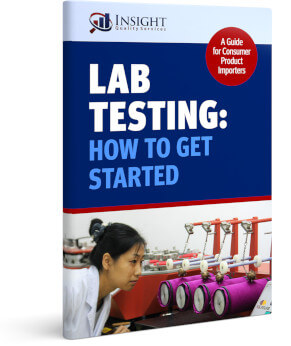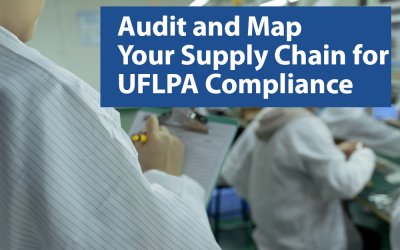If you’ve ever imported consumer products to the United States, you probably know about the Consumer Product Safety Commission (or CPSC), and if you are not familiar with the CPSC, you should be.
The CPSC is a government agency that, according to their website, “Works to reduce the risk of injuries and deaths from consumer products.”
One of the ways they do that is by enforcing mandatory standards that importers need to comply with.
As an importer, you have to be sure that your products are compliant with all applicable regulations. And the CPSC is the agency that comes up with many of those regulations.
Fortunately, they provide a number of great resources that you can take advantage of. These resources make it easier for small businesses to navigate the world of safety regulations.
Here are 5 ways the Consumer Product Safety Commission can help you.
#1 – Navigate Bureaucracy More Easily With Help From the Ombudsman
The CPSC’s Small Business Ombudsman is an official tasked with helping small businesses navigate regulations.
The ombudsman is the “primary point of contact for small businesses seeking advice and assistance in complying with agency rules.”
The office of the Ombudsman makes a number of resources available on the agency website. They also do online trainings and in-person events to help small businesses improve product safety. Their Twitter feed is periodically updated with information on upcoming activities.
#2 – Determine Which Regulations Apply to You With the Regulatory Robot
One helpful tool provided by the office of the Ombudsman is called the Regulatory Robot.
This tool is designed to help you identify important product safety requirements that may apply to your product.
It will ask you a series of questions about the specifics of your product. Then, once you’ve completed the questionnaire, it will give you a list of safety concerns, steps to take, and regulations that are likely to apply to you.
It’s worth noting that you should also consider speaking with a product compliance consultant. They may bring up important considerations that you didn’t think of on your own and, thus, didn’t input into the Regulatory Robot.
#3 – Find an Accredited Lab By Searching This Official Listing
For some product classifications, lab tests may be required. Even if they aren’t required, they can still be a good idea.
When doing lab tests, be sure to use an accredited lab.
The CPSC has a listing where you can search for labs based on relevant criteria. The search tool will then give you a list of labs to choose from.
#4 – Make Your Products Safer By Complying With Voluntary Industry Standards
There are thousands of voluntary standards that exist for different industries. The CPSC works to help develop many of these standards.
While compliance is not required, they are generally agreed upon in their relevant industries. Complying with voluntary standards will help make your products safer for consumers.
This has the added benefit of being good for your brand image. So, it is a good idea to investigate standards that are applicable to your products.
#5 – Improve Your Quality Control By Reviewing Product Recalls
The CPSC is tasked with issuing recalls of products that are found to be unsafe. On their website, you can see a listing of recent recalls.
When you’re developing your quality control checklist, this list can be very helpful.
Do a search for recalled products similar to yours. Check to see what kind of defects they had. This will help you identify safety issues that could potentially affect your own products.
Armed with this information, you’ll have ideas for items to add to your quality checklist. You’ll also be better-prepared to ensure the quality and the safety of your products.
Use the Product Safety Resources Available to You
The Consumer Product Safety Commission is an important agency for U.S. importers to be aware of. They’ve put many regulations into place, and it’s important that you are compliant with these regulations.
The good news is that they provide many product safety resources to small businesses like yours. These resources can be helpful in determining which regulations apply to you. They can also help you to ensure the safety of your products.
Use these resources to their full extent and you will be in a better position to avoid having your products stopped at the border or recalled from shelves.
Lab Testing: How to Get Started
As a consumer product importer, lab tests help you ensure that your products are compliant with regulations in the country of importation.
We’ve put together this guide to help you get started with lab testing so that you can make your products available for sale sooner rather than later. Avoid fines and customs issues by starting off on the right foot.





0 Comments